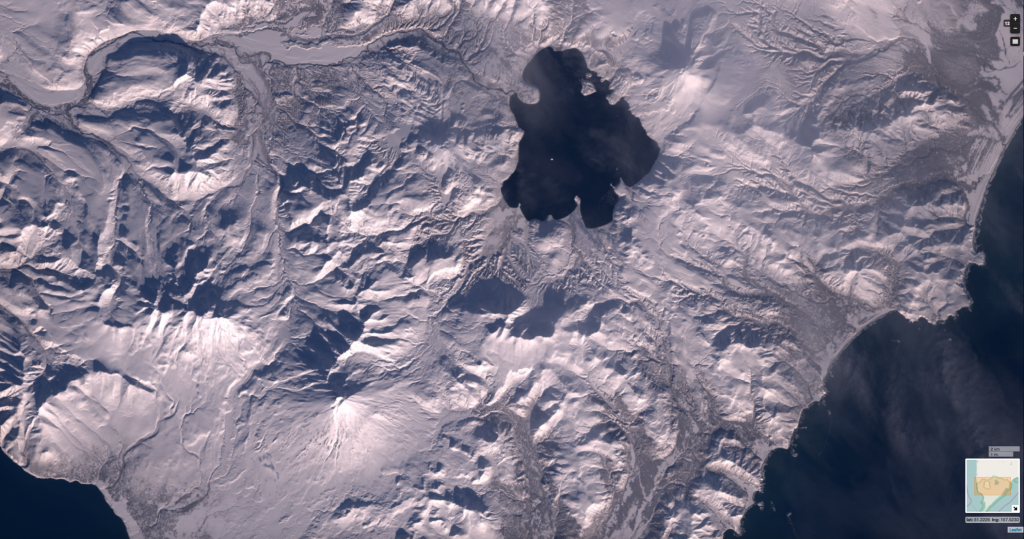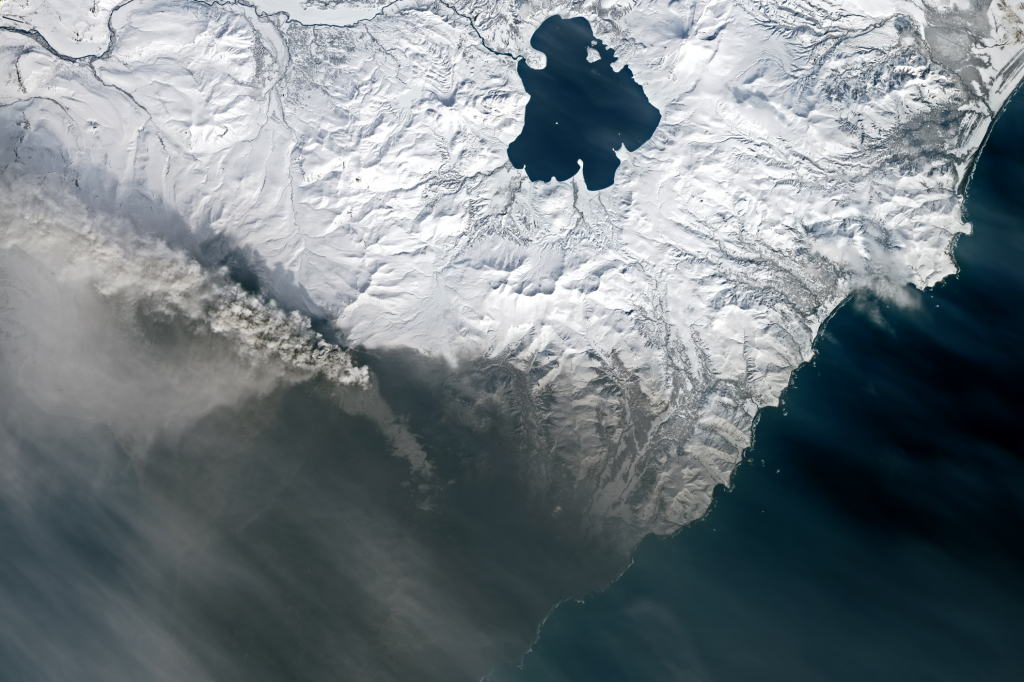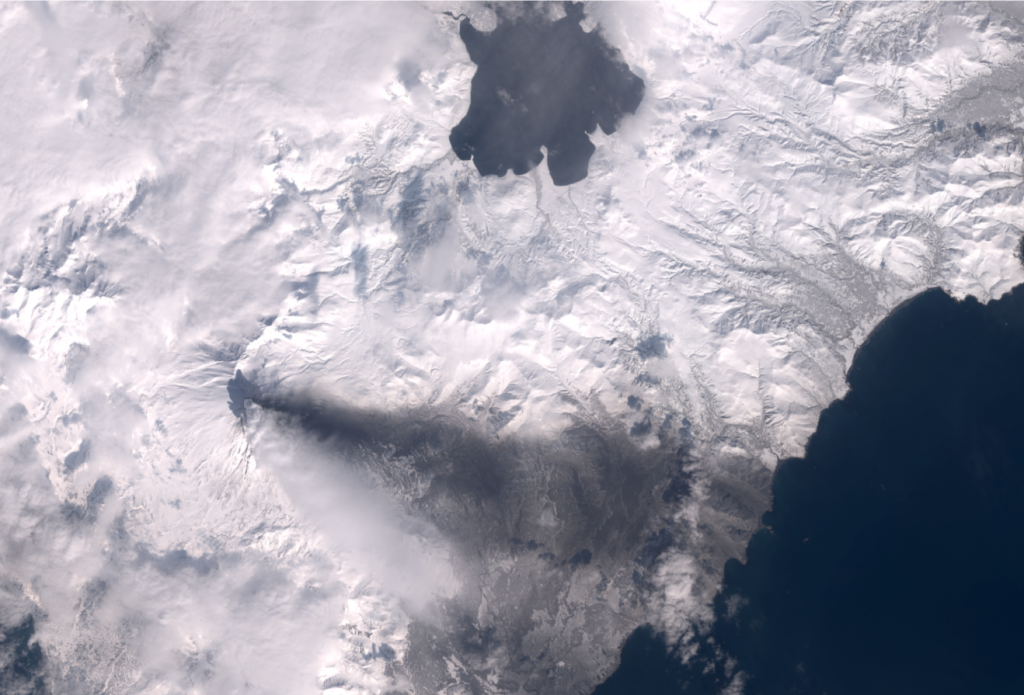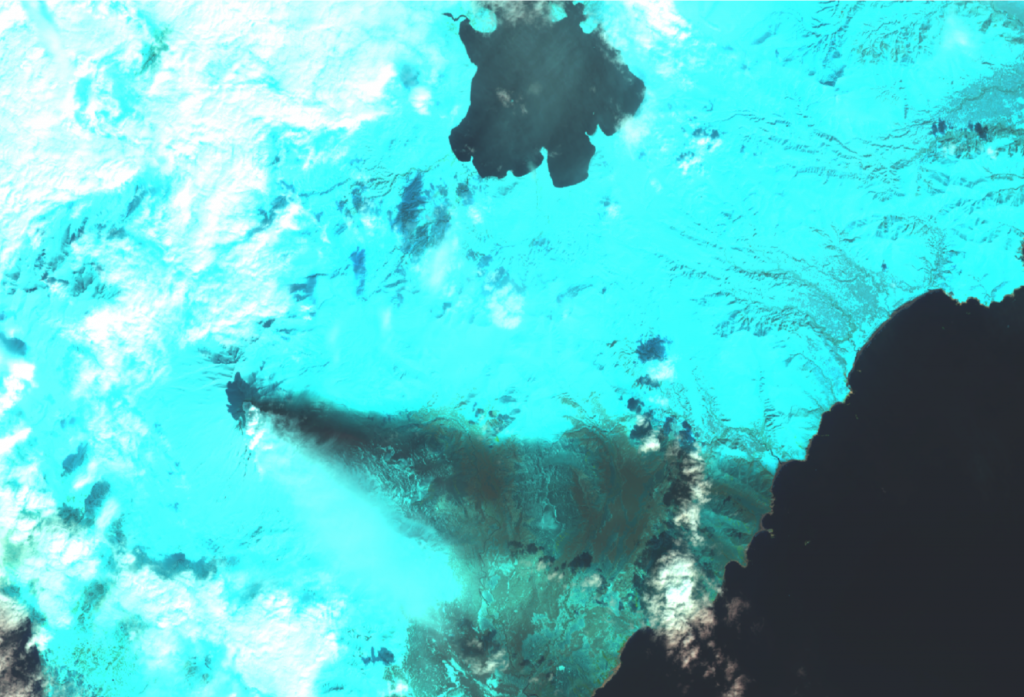Kambalny Volcano on Kamchatka Peninsula Erupts: BlackSky Platform Monitors Changes
Satellite imagery is crucially important for responding to crisis events like natural disasters. While we usually focus on high-resolution imagery for monitoring crises, the BlackSky platform also gives us access to “low-medium” resolution sensors like Landsat-8 and Sentinel-2. These multispectral sensors can be useful for crisis response, and are great for monitoring wide areas and evaluating environmental impact.
For example, last month the 7,103 foot Kambalny Volcano in the Russian Kamchatka region erupted for the first time in several hundred years. (The last time was in the reign of Catherine the Great). It was a complete surprise to scientists, erupting with no warning signs. We used Landsat via the BlackSky platform to monitor the ongoing eruption.
Mount Kambalny and Kurile Lake – a few days before the eruption:
Mount Kambalny and Kurile Lake – during the initial eruption period on March 28th (some cloudy/hazy interference, but you can see the ash plume and the ash debris field covering the fresh snow):
Mount Kambalny and Kurile Lake – still erupting this week (Kamchatka has been storm-socked for the past 2 weeks – then we got a clear shot. Previous ash debris field has been covered by fresh snow, but new ash field has melted through the snow exposing bare earth in many areas):
Mount Kambalny and Kurile Lake – this is a false-color composite of the above image (using Landsat’s infrared bands for better differentiation between clouds (white) and snow (aqua-blue) and hot steam (almost invisible), and a clearer view into the impacted area on the ground):
And finally, here’s a beautiful view from the ground (found using the BlackSky Alerts global monitoring service):
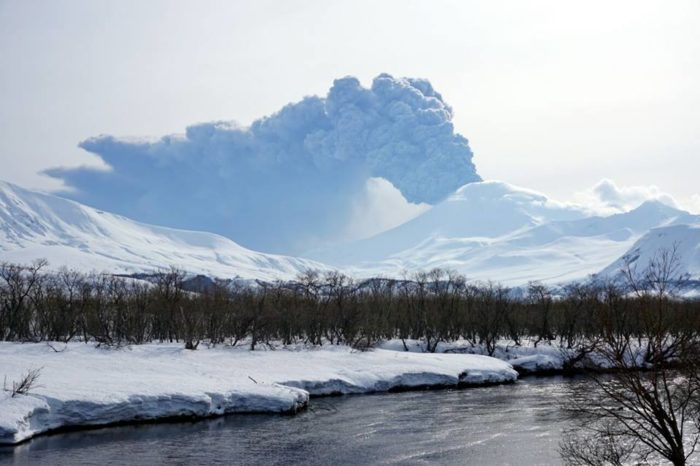
Fortunately, this part of the Kamchatka Peninsula is very sparsely populated (except for one of the largest bear populations in the world). It is home to more than 300 volcanos, but few people.There was very little risk to life and property so we were able to sit back and enjoy our view from space of one of the Earth’s natural wonders.


